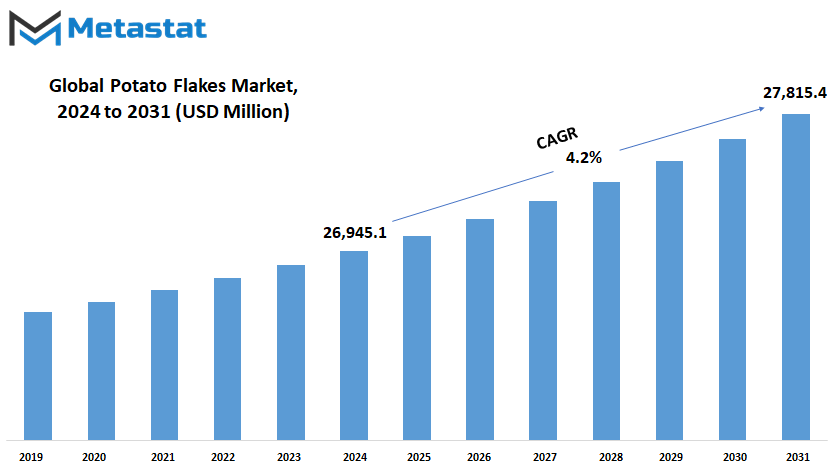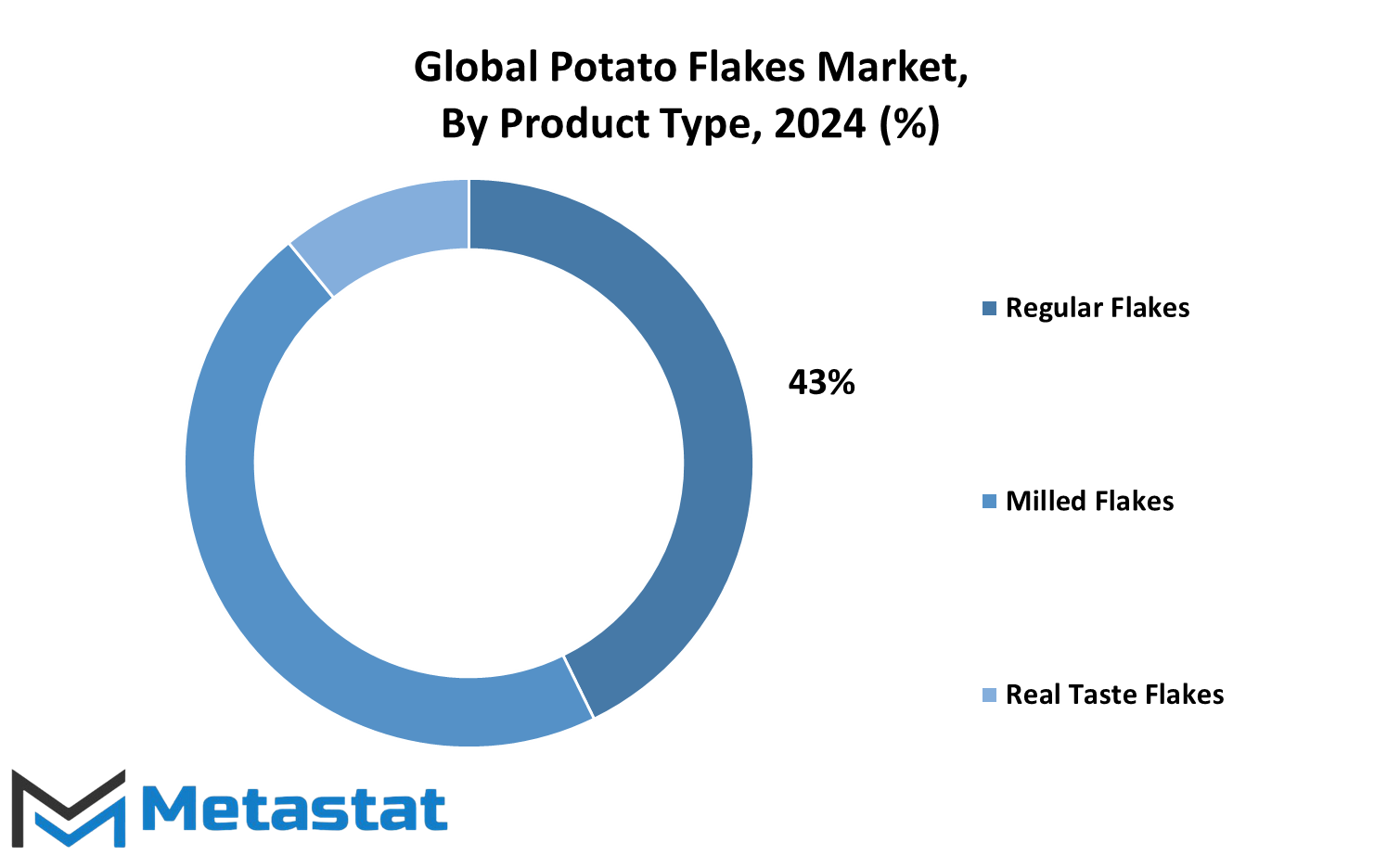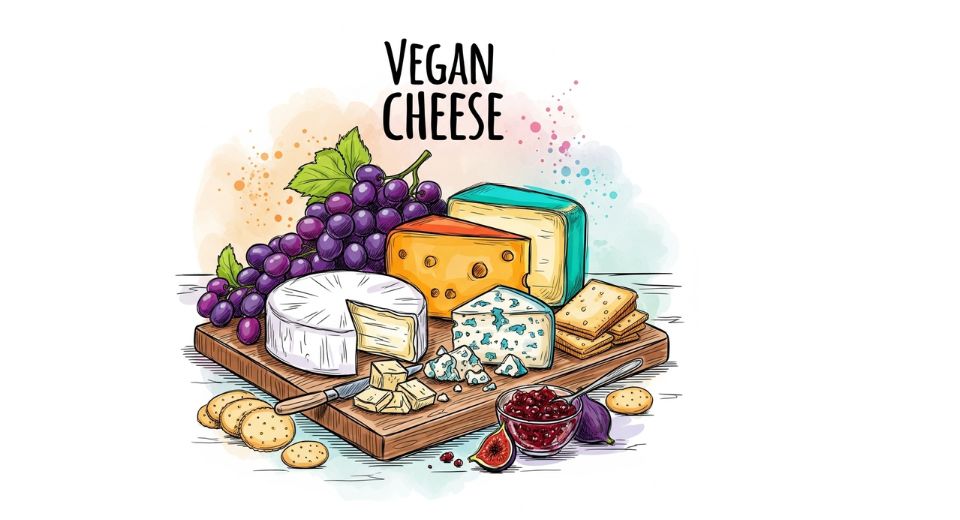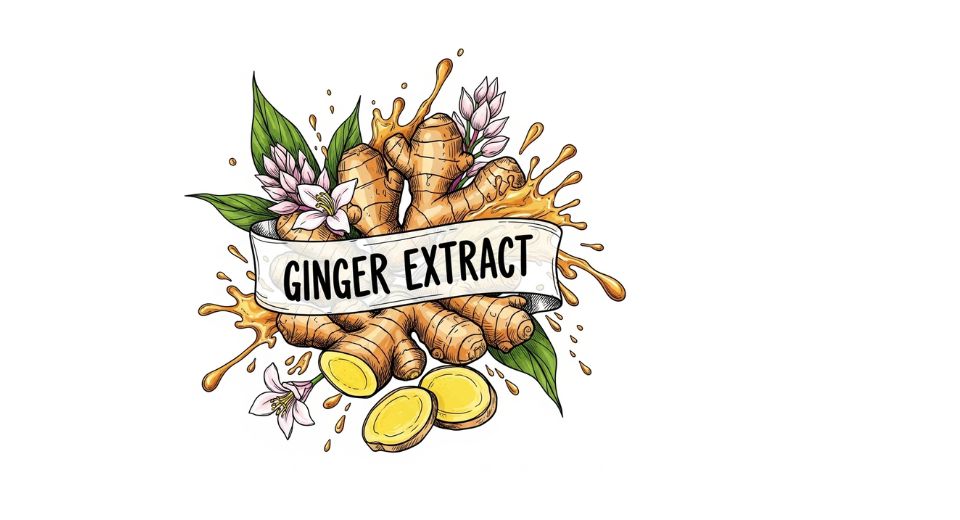MARKET OVERVIEW
The Global Potato Flakes market will form the future of the food industry as demand for more convenience and ready-to-use food products increases globally. This market encompasses a large number of companies which manufacture, distribute, and sell dehydrated potato flakes-a very versatile ingredient used in a variety of products such as instant mashed potatoes, soups, snack foods, and other processed meals. Potato flakes are obtained from dehydrated mashed potatoes ensuring that the final product is light and fluffy with much of the natural flavor and nutritional value of fresh potatoes. The market for potato flakes will continue growing as consumer preference shifts toward convenience and increased usage of potato-based products across the food sectors.
The advantages of flakes are longer shelf life, reduced preparation time, and ease in transportation. It is now a widely preferred ingredient not only in home kitchens but also in the large food manufacturing industries. Potato flake consumption will go well beyond traditional use in snack and ready-to-eat foods, new product innovations within these categories. Major production techniques for potato flakes in the coming years would be the enhancement of texture, flavor, and nutrition profile of the flake.
Production techniques of healthier, low fat, and sustainable products of the food industry will affect the design of potato flakes. Apart from this, high demand for gluten-free and plant-based products will drive the position of potato flakes in fulfilling variegated dietary needs. This shift will eventually lead to the development of a number of potato flake products with niche positioning according to special groups of health-conscious consumers, as well as additional diversification in their use. Global population growth will lead to more urbanization. There will be an increased demand for ease-of-preparation and quick-cooking processed food products.
Potato flakes will offer convenience, rehydrate quickly, so it’ll be a central ingredient in both the fast-food, retail, and institutional sectors. The second one is the resultant increase in incomes of emerging markets, which will trigger demand for premium and convenient-to-eat foods, thus opening up new markets to be tapped by manufacturers of potato flakes into new geographies. Supply chain innovation will also be a big influencer of the future of the market. As cost savings and consistent on-time availability of the product are important factors of manufacturers, new sourcing strategies through partnerships with potato growers will be the answer for stable raw material supplies. Because the market of potato flakes relies much on agricultural production, development in potato farming and crop yield could even have direct implications on the quantity and price of the product.
Geographically, the Global Potato Flakes market will expand into emerging economies, mainly across Asia-Pacific, Africa, and Latin America. These regions will witness growth in consumption due to changing dietary habits and increasing disposable income. In fact, although developed regions such as North America and Europe will continue to hold the top positions, the diversification of the consumer base will modify the competitive landscape in these emerging markets during the next few years.
Ultimately, the Global Potato Flakes market will cater to the diverse needs of an increasingly vast global population. Advancements in technology, changes in consumer preferences, and even the importance of convenience will help to introduce a constantly increasing variety of new product offerings while continuing to cover a global reach, making it an important part of a much broader food industry.
Global Potato Flakes market is estimated to reach $27,815.4 Million by 2031; growing at a CAGR of 4.2% from 2024 to 2031.

GROWTH FACTORS
Several important factors that are currently influencing the industry today have brought about rapid growth to the global potato flakes market. Of these, one highly significant factor contributing to this growth is the increase in demand for convenience food and ready-to-eat meals. In the scenarios prevailing today where the consumer has a busier life than ever before, people would want convenience without compromising on taste or nutrition. With the convenience and versatility, the potato flakes become increasingly popular in all kinds of packaged foods. It has high versatility as it rehydrates easily and can be included in various products; hence the manufacturers appreciate this versatility of potato flakes.
Another factor driving the growth of the global potato flakes market is the emerging application of potato flakes as a functional ingredient in the food industry. Potato flakes are increasingly well taken up in areas such as bakery and snack sectors, by virtue of their ability to enhance the texture and flavor in food products. Bread, crackers, chips, and other snack foods all share a little differently unique characteristic owing to potato flakes; these are fast gaining popularity among manufacturers of food products. As a result of increasing consumer preference toward clean-label and natural ingredients, potato flakes will be even more in demand as food processors continue to look for healthier alternatives than the more processed ingredients.
However, the global potato flakes market growth will also be restricted by some challenges. Raw material price fluctuations due to the variation in potato crop yields is the main one. Weather conditions, pests, and other factors can drive the cost of potatoes to a dramatic extent, thereby increasing production costs. This would, in turn, limit the profitability of producing potato flakes, thus affecting market growth. Another factor that would weaken this market expansion is competition in the potato-based products market, like potato powder and starch. Some of those substitutes will be cheaper and will provide similar advantages and hence can become an alternative for manufacturers.
However, despite such difficulties, bright opportunities are also available in the global potato flakes market, particularly the rising demand for gluten-free and clean-label products. More and more health-conscious consumers opt for food free from artificial additives and preservatives, thus opening the way for expanding the gluten-free food market. Potato flakes, through their intrinsic and quite simple ingredient list, are well positioned to cater to this demand. Since consumer preferences are shifting toward healthier consumption, a growing demand in the potato flakes market is likely in the years ahead, that will progressively create most opportune avenues for growth.
MARKET SEGMENTATION
By Nature
Such rising demand from the food industries, along with changing consumer choices towards convenient and healthier products, is likely to fuel steady growth in the world potato flakes market. Dehydrated potatoes or potato flakes are an ideal and versatile ingredient for a wide variety of food products, including instant mashed potatoes, bakery items, soups, and snacks. Because potato flakes are an easy and long-life product, they have gained popularity in homes and large-scale food manufacturing systems, and with more and more consumers seeking conveniently prepared meals, the demand will be increasing.
In the future, organic and conventional varieties in the global potato flakes market are going to depict significant importance. The division between organic and conventional potato flakes manifests the rise in consumer awareness over where food originates, quality, and sourcing. Organic potato flakes attract the end by those who have health and environment sustainability as their top priorities, while traditional potato flakes are preferred since they offer lower prices and are therefore more accessible. When more individuals become health-aware, demand for organic potato flake should increase, so producers should pay much attention to organic farming practices. On the other hand, conventional options will remain unavoidable for regions where cost will still play a significant role in determining food products.
One more factor that is fueling growth in this market is the rising trend toward plant-based and vegan diets. Potato flakes are plant-based, making them particularly well-suited to these preferences. They are a fantastic ingredient for producing vegan-friendly and gluten-free products, which are increasingly in fast demand across all age groups. The manufacturers will certainly seize this opportunity by developing more plant-based product lines with potato flakes as their primary ingredient.
Another growth prospect in the global potato flakes market lies in its application into packaged and processed foods, especially in developing regions where urbanization and busy lifestyles have become quite common. With more people worldwide taking up hectic lifestyles, preparation of such diets requires speed without a sacrifice in nutrition levels. Potato flakes can easily fit into this requirement, and therefore are a staple for several instant food products.
This will be excellent news for the global potato flakes market, as growth is expected to be continuous with emerging consumer trends. Organic potato flakes may increase among health-conscious buyers, but conventional potato flakes would still find a home in meeting demand for affordable, convenient food ingredients. Quality-focused products and accessible options balance out against each other to ensure that the market would continue to grow to meet each consumer’s different needs. New food trends and changes in food preferences do not minimize the value of potato flakes, meaning they are still a versatile ingredient within the global food industry.
By Product Type
The growth of the global Potato Flakes market is also influenced by changes in the tastes and palates of consumers, diet shifts, and advancements in food processing technology. Potato flakes in fact are considered one of the most versatile ingredients used in the manufacturing process, retail, and even at household levels. Increasing popularity is gained by convenience, extended shelf life, and ease of use. The market is primarily segmented by product types-Standard Flakes, Low Moisture Flakes, and Flavored Flakes-which service different requirements that broaden the appeal of potato flakes to various industries.
Demand for easy-to-prepare, quick meal solutions will continue to drive demand for potato flakes. For instance, Standard Flakes have been widely used in industrial foodstuff production particularly where stability and texture characterize the final production as is the case with mashed potatoes, soups, or baked products. These flakes represent a safe bet in food manufacturing since they provide easy preparation without offending flavor or quality, which most consumers tend to prefer. They offer a very simple way to obtain the desired thickness and creaminess for recipes by households as well as restaurants.
The Low Moisture Flakes segment is also expected to grow at an impressive level. With lower moisture content, the flakes are less moist, thus offering a longer shelf life and better storage stability, which in turn makes them more appropriate for the continuously expanding processed food market. These low-moisture options offer an efficient means for manufacturers to meet the growing demand for ready-to-eat and packaged food, for which ingredients have to endure longer transport times and storage periods. The factor especially relevant is for countries with less frequent import cycles or for regions where conditions for storing food are challenging.
Flavored flakes comprises another market segment, reflecting the various flavor trends of current consumers who want to experience fresh flavors in meal intake. The range and variety create the possibilities for innovation as producing food offers the opportunity to experiment with new combinations that are unique and would suit various tastes. Since consumers are increasingly looking for interesting, flavorful, and unique options in daily foods, the market is to expand and diversify its domains with flavored potato flakes.

By Application
The market for potato flakes is likely to grow significantly in the years ahead with the increasing need for the product across different applications- food and beverage, animal feed, and industrial. Potato flakes, which are derived from the dehydrated mashed potatoes, have several merits in terms of convenience, versatility, and longer shelf lives as a commodity. They are easy to reconstitute and form the core ingredient of various instant, multi-instant, and processed foods, which contributes to the popularity of this market.
Potato flakes are one of the most important ingredients in the food and beverage sector. The thickening agent provides stabilization of foodstuffs to their consumers; hence, it has extensive use in sauces, soups, and baked commodities. The demand for processed and ready-to-eat foods has kept increasing because of consumers’ pressure to find easier meal options, especially in urban areas, where hectic lifestyles and preferences for quick yet great food are promoted. The potato flakes are useful to manufacturers because prepared in simple processes with flexibility toward various flavorings, whereby companies can increase the selection to different palates. As more people get concerned over not wasting food, long shelf life also starts becoming increasingly a sustainable option within food industries.
Another potential for the global potato flakes market remains in animal feed. Potato flakes contain much nutritional value and play a vital role in delivering necessary energy as well as protein to livestock. They also act as a digestible and value-for-money replacement to traditional feed constituents like corn or wheat. Higher consumption of potato flakes is set to be positively related with more efficient and sustainable agriculture. They can be stored for long durations; this is quite helpful to areas prone to interruptions in the supply chain. Using potato flakes as feed reduces reliance on conventional grains, thereby stabilizing feed price stability and also promoting animal health.
Industrial applications help to add to the expansion of the potato flakes market globally. Potato flakes have an excellent adhesive and binding characteristic, which makes it ideal not only in food products but also in many other applications in the realm of bio-based packaging materials and adhesives. As more companies strive to consider the sustainability aspect of their product and lifestyle, the viability of developing biodegradable and environmentally friendly products becomes more possible through the use of potato flakes. The technology is consonant with a more general trend toward lower impact materials, so potato flakes are a pretty attractive ingredient for industries that want to reduce their ecological footprint.
The global potato flake market is poised to grow with demand increasing throughout food, feed, and industrial applications. Convenience and adaptability of potato flake continue to ensure continued value in an ever-changing world. Growth into such areas is likely be derived from innovation, which will present new opportunities for the potato flake in current and emerging markets.
By End-User
The entire international market for potato flakes is expected to grow significantly with shifting consumer preferences and diversification in various industries. Potato flakes are long shelf life products that are relatively easy to prepare and can be used in most recipes. Thus, they become popular within the domestic and commercial kitchen environments. In this regard, the flakes form an essential ingredient for various end-users, which include households, the foodservice industry, and industrial food producers. Their popularity is still rising, not only because of their convenience but also the versatility they bring for a wide variety of applications in culinary use.
In the household sector, potato flakes enjoy the simplicity and quick preparation. As more people seek ways to prepare meals efficiently without having to sacrifice taste and quality, here they find an ideal solution. Potato flakes can be used to prepare mashed potatoes, soups, and stews, as well as other comforting foods. Hectic urbanisation and the fast-pace life are going to propel future growth in this market segment-since ready-to-cook meals and fast food will likely increase with the quick rate of urbanisation and everyday life.
Potato flakes are cost-effective and saves time in the foodservice sector, encompassing restaurants, cafes, and catering. When large-scale food production has to be carried out within the shortest time possible, potato flakes are always called in because they provide a dependable and consistent ingredient. The trend of dining out in urban cities and the sheer number of eateries seeking to cut costs while fast-tracking service delivery guarantee that the food-service industry will heavily rely on potato flakes in fulfilling customer demand. They help cooks obtain the same texture as well as the same flavor for all the dishes, and they can be a secondary source of fresh potatoes in case of large preparations.
In the industrial sector, potato flakes are used in processed foods, such as snacks, baked goods, as well as ready-to-eat meals. With advances in food processing technology, potato flakes will increasingly be demanded in the industrialized world by companies looking for ingredients that maintain quality and meet increasingly health-oriented consumer requirements. Manufacturers will capitalize on this trend to create new applications for potato flakes as they move toward healthier and sustainable food production. Innovation in taste, packaging, or production processes may additionally be a starting point for making use of potato flakes as an ingredient in other foodstuffs and, thereby, also finding areas to differentiate.
Overall, the potato flake market appears to be prepared for further expansion worldwide. The more households, foodservice, and industrial customers are likely to switch to this versatile ingredient, the more steady the demand in the market will be. The future promises even more integration of potato flakes into many food production practices via convenience, cost-effectiveness, and the need for different meal options.
|
Report Coverage |
Details |
|
Forecast Period |
2024-2031 |
|
Market Size in 2024 |
$26,945.1 million |
|
Market Size by 2031 |
$27,815.4 Million |
|
Growth Rate from 2024 to 2031 |
4.2% |
|
Base Year |
2022 |
|
Regions Covered |
North America, Europe, Asia-Pacific Green, South America, Middle East & Africa |
.
REGIONAL ANALYSIS
The Global Potato Flakes market is expected to change profoundly in the coming years. It spans across different regions with varying growth patterns and challenges. Important regional markets for sizing the future of the global Potato Flakes market are North America, Europe, Asia-Pacific, South America, and the Middle East & Africa. Understanding these regional dynamics will provide insight into how the market may evolve and what trends are likely to gain momentum.
North America will remain the leading region, simply because the U.S., Canada, and Mexico will continue playing a critical role. Innovations and progress in technology on food, in general, will continue coming from the United States, and this might even expand to the production and utilization of potato flakes. As consumers demand more convenient, processed foods, demand for potato flakes will increase. Such gains will benefit demand and production in Canada and Mexico by paying increased attention to accessing their local demands and increasing international market presence. This trend continues because North America has adopted a heightened embrace toward more sustainable practices of food manufacture.
Europe, which encompasses such large markets as UK, Germany, France, and Italy, is another important market for potato flakes. These countries have food processing industries that are pretty old, and the demand for potato flakes is likely to increase in the near future. The increasing demand for convenient foods, such as instant mashed potatoes, and augmented awareness regarding food waste have made potato flakes a more viable option compared to fresh potatoes. European consumers' preference for healthy and sustainable food options will work in favor of market growth for potato flakes in the region.
The global Potato Flakes market is expected to grow in countries such as India, China, Japan, and South Korea. Consumers are increasingly shifting from traditional food products to processed food products due to rising urbanization and changing eating habits. Higher disposable incomes will generate a fast-paced demand for packaged foods, including potato flakes. China and India offer gigantic market size; while the growth in markets of Japan and South Korea will be addressed by increasing the availability of high-quality, value-added potato products.
Brazil and Argentina are significant contributors to the market in South America where the demand for potato flake has been growing steadily. As economic conditions in the region continue to improve, consumers will increasingly seek convenient food options that would fuel growth in demand for potato flake. Expansion would occur in the Middle East & Africa, with the GCC nations, Egypt, and South Africa. With the GCC nations, Egypt, and South Africa constituting some of the promising regions in the Middle East & Africa, the increased popularity of fast foods and processed snacks would mean an increase in the demand for potato flakes in the region.
It is the nature of the global Potato Flakes market that will experience a robust growth path in the years to come because of the diversified regional drivers where most have different needs, but this pattern of consumer preference continues, especially with its shift towards convenience and sustainability in food.
COMPETITIVE PLAYERS
The recent growth and development in the global potato flakes market have been achieved due to the realizations of convenience foods and versatility in potato-based products. As the world rapidly turns into a place being shaped by rapid advancements in technology, changes in consumer preferences, and shifting towards more healthy choices, the potato flakes industry has been foreseen to continue growing and changing. Companies that are going to operate in this market are going to be leading ready-to-eat and processed food providers to the world, as well as other newly driven consumer preferences such as plant-based and sustainable food products.
The competitive landscape of global potato flakes market is going to get intense in the upcoming years with innovation, product development, and strategic alliances by the major players. The top players in the market are companies such as Lamb Weston Holdings, Inc., McCain Foods Limited, Nestlé S.A., and Idahoan Foods, LLC. These companies have long been driving growth and trends based on their leadership in the market. In addition, the companies have also been able to build high brand recognition due to their enormous portfolio of potato flakes products varying from traditional offerings to more specialized ones in order to accommodate different dietary requirements.
In this forecast period, Basic American Foods, Inc., Agrana Beteiligungs-AG, and Emsland Group will possibly focus on augmenting their product offerings and invest in novel technologies so that they can respond to growing demand for convenience and health-conscious options. Other focus areas for such players will include more sustainable practices-reduced sourcing of raw materials and lower environmental footprint.
Aviko Rixona B.V., Birkamidon Rohstoffhandels GmbH, and Bob's Red Mill Natural Foods, Inc. will aggressively promote niche markets for potato flake products, including gluten-free and organic potato flake sales, as well as other specialty products. The companies will consider catering to taste, dietary restriction, and nutritional requirements to strengthen their market presence with the rise in the diversity of consumer preferences.
The future, however, for the global potato flakes market also revolves around the rising trends of emerging markets. The regions like Asia Pacific and Latin America would pose substantial opportunities for market expansion through urbanization, rising disposable incomes, and evolving food preferences. The industry players will be challenged to innovate continually in order to compete and address the dynamic and diverse character of the consumer base with ever-escalating demands for more convenient, nutritious, and cost-effective potato products around the globe.
The global potato flakes market, in brief, holds much promise and is to be expected to grow further as the leading players invest more in new products, technologies, and practices with regard to sustainability in order to meet the changing needs of the consumer psyche all over the world. The competition will be intense but only those companies capable of striking that perfect balance between innovation and consumer demands for healthier and more environmentally conscious options will likely emerge as the key players in the future of this industry.
Potato Flakes Market Key Segments:
By Nature
- Organic
- Conventional
By Product Type
- Standard Flakes
- Low Moisture Flakes
- Flavored Flakes
By Application
- Food & Beverages
- Animal Feed
- Industrial Applications
By End-User
- Household
- Foodservice Industry
- Industrial
Key Global Potato Flakes Industry Players
- Lamb Weston Holdings, Inc.
- McCain Foods Limited
- Nestle S.A.
- Idahoan Foods, LLC
- Basic American Foods, Inc.
- Agrana Beteiligungs-AG
- Emsland Group
- Aviko Rixona B.V.
- Birkamidon Rohstoffhandels GmbH
- Bob's Red Mill Natural Foods, Inc.
- Intersnack Group GmbH & Co. KG
- KMC Ingredients
- Pfanni GmbH & Co. OHG
WHAT REPORT PROVIDES
- Full in-depth analysis of the parent Industry
- Important changes in market and its dynamics
- Segmentation details of the market
- Former, on-going, and projected market analysis in terms of volume and value
- Assessment of niche industry developments
- Market share analysis
- Key strategies of major players
- Emerging segments and regional growth potential








 US: +1 3023308252
US: +1 3023308252






